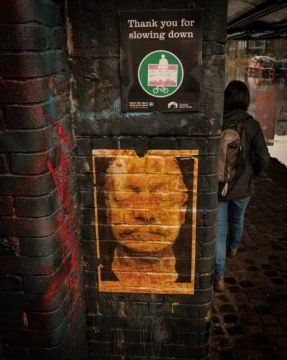by Chris Horner
 Not long ago there was an article circulating on Facebook about ‘Hating the English’, originally published in a large circulation newspaper. The Irish author says something to the effect that once she thought it was just a few bad ones etc., but now she hates the lot of them. It’s been stimulated, I think, by the repulsive English nationalism that has been raising its head since Brexit, plus the usual ignorance about Ireland, Irish history and Irish interests on the part of your typical ‘Brit’. It’s not a very good piece of writing, and it has a rather slight idea in it. I’d ignore it but for the ‘likes’ and positive comments it’s received, particularly from ‘leftists’. It’s an example of what we could call ‘bloc thinking’ – the emotionally satisfying but futile consignment of entire masses of people into categories of nice and nasty.
Not long ago there was an article circulating on Facebook about ‘Hating the English’, originally published in a large circulation newspaper. The Irish author says something to the effect that once she thought it was just a few bad ones etc., but now she hates the lot of them. It’s been stimulated, I think, by the repulsive English nationalism that has been raising its head since Brexit, plus the usual ignorance about Ireland, Irish history and Irish interests on the part of your typical ‘Brit’. It’s not a very good piece of writing, and it has a rather slight idea in it. I’d ignore it but for the ‘likes’ and positive comments it’s received, particularly from ‘leftists’. It’s an example of what we could call ‘bloc thinking’ – the emotionally satisfying but futile consignment of entire masses of people into categories of nice and nasty.
It has a number of obvious problems. It is deeply unwise to brand entire national groups good or bad, to declare love or hate for whole ethnic or national communities. Too many English people have branded the Irish in just that way throughout their shared and troubled history; just repeating it the other way is hardly progress. This kind of thing is the habit of the worst kinds of right wing chauvinists, and we should steer well clear of it. We get the same kind of thing about, for instance, from ‘anti-imperialists’ despising the ‘Americans’ (meaning usually: ’citizens of the USA’). This is particularly obtuse when it comes from people who have never visited the USA and don’t know anyone who lives there. Just think: 328 million people, rich and poor, white, black or brown, anglo and latino, from coast to coast. All dismissed, because policies emanating from ‘America’s’ ruling 1%. It is true that many – not all by any means – US citizens will have supported those policies, but that ought to be the beginning of a problem to think about, not the invitation to simple minded moralising. Fatuous generalisations are so obviously foolish that it might not detain us long, if it were not for the tendency of this kind of approach to encompass whole swathes of people, demographics and even generations as Good or Bad. So we get Greedy ‘boomers’ versus ‘millennials’, or whatever crass label is currently in use. And so on. Read more »
